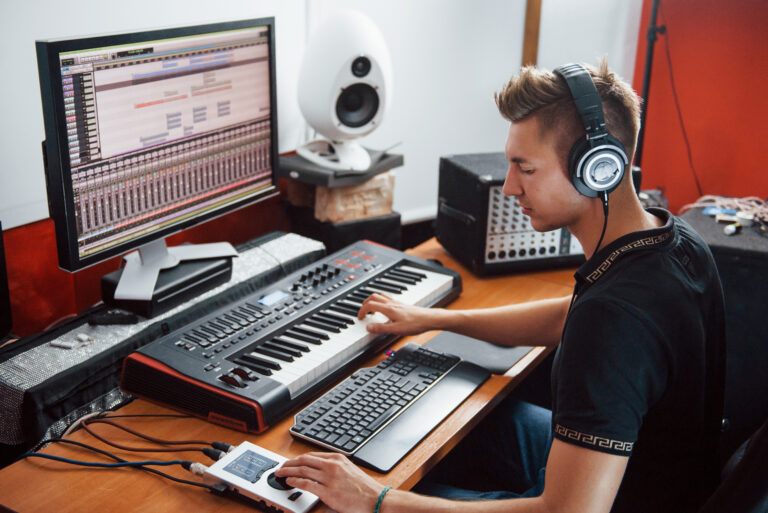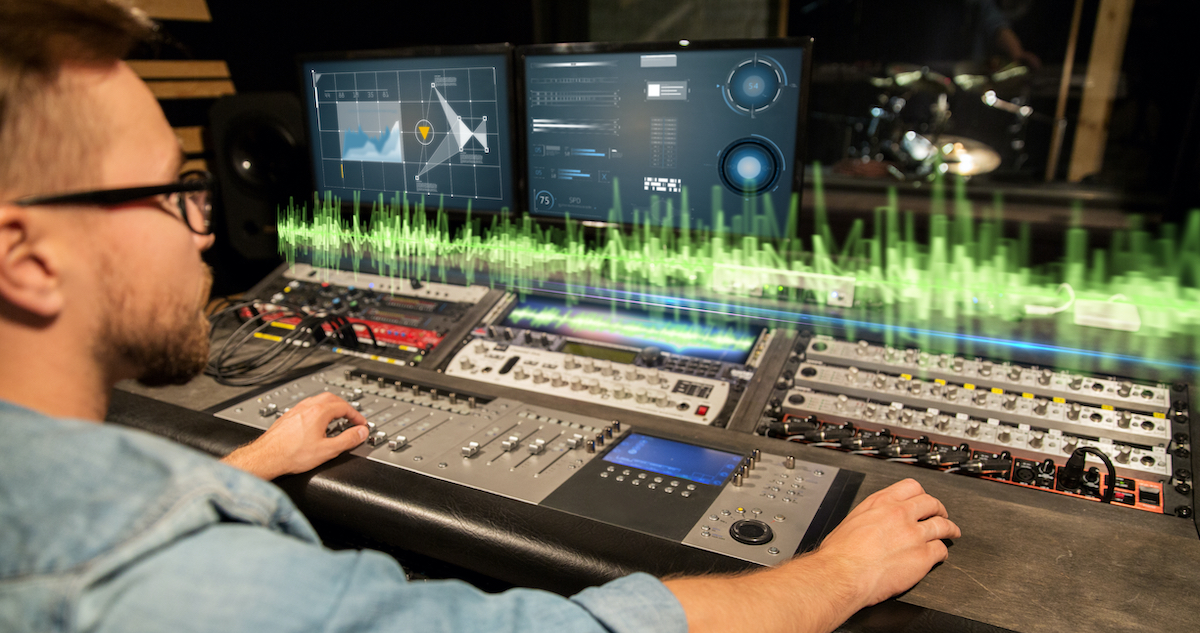We’ve heard from a number of Voice123 clients that communicating with a voice actor can be intimidating – especially if you’re a new kid on the block when it comes to booking and directing a voice over session. Of course, it shouldn’t be – and it won’t be if you know and understand the language of voice acting. So if you’ve landed on this page searching for terminology, don’t forget to look at this article too – it’s all about knowing how to best speak the language of voice acting! Being able to understand and use general voice acting terminology is one of the most important aspects of communicating with a voice actor. Why? Because you can only truly ensure the success of your recording project if you both speak the same language.

While many of the terms voice actors use also apply to editing and audio engineering, Voice123’s Client Success team has singled out a Voice Acting Terminology Golden Seven. These are the terms that come up most frequently during conversations with clients on the one hand and voice actors on the other. Get to know them and use them and you and your chosen voice actor will be making voice over magic in no time! We’re not ranking them in any order of priority.
Pace
Pace refers to speed — or alternatively, the number of words a voice actor should read per minute to fit within a mandatory timeframe. It can become an issue when a read is so fast a voice actor’s articulation suffers. Especially with commercial scripts, producers/directors inevitably want to get as much information across as possible — usually within 30 seconds or less, as this is the most popular duration for an advertisement. A voice actor’s normal pace, the pace at which s/he sounds most natural, is always best. This can vary, of course — depending on the actor’s personality and style.
Style
Style refers to the way a voice actor reads the script. Heaps of both nouns and adjectives qualify, but the best are adjectives that elicit a suitable emotional response from the voice actor. Typical styles often quoted (as nouns) are:
- Narration
- Inspiration
- Animation
- Comedy
- Announcement
- Corporate
- Documentary
- eLearning, etc.
These are genres rather than styles. Terms voice actors will respond to must be descriptive and emotive. Think in terms of:
- Hard-sell
- Soft-sell
- Persuasive
- Angry
- Whispery
- Aggressive
- Humorous
- Happy
- Kind
- Friendly
- Girl-next-door
- Boy-next-door, etc.
When you use descriptive and emotive terms, voice actors will instantly know what you’re expecting them to do.

Tempo
While pace is the speed at which a voice artist delivers lines, tempo refers to changes in pace. Thus, tempo is the speed of the underlying beat of the read. In the trade, a ‘beat’ is a slight pause. If you ask a professional voice actor like those you’ll find on Voice123 to put in a ‘beat’ between two phrases, s/he will know exactly what you’re asking them to do. Consequently, when an actor reads a script without any breaks or pauses, it’s a ‘pacy, rapid-fire’ read. Think of it this way:
Pace is the speed in which the lines get delivered, tempo refers to the speed at which the lines get delivered.
Tone
Tone refers to tone of voice or attitude; the way a voice actor speaks. Tone is closely related to style; the relationship is symbiotic, given the impact they can have on one another. Tone can be crucial, particularly if there are pick-ups or re-reads of certain sections of a script spread across more than one session. While most pros can match tone from a previous session, some simply can’t. Bad tone-matching can ruin a voice over.
Rhythm
In voice acting, rhythm plays an important role in defining how well the entire delivery of the read sounds. Rhythm essentially refers to a strong and regular repeated pattern of movement, and it allows the voice actor to shape up their lines better. So if you, as a producer or a director, are finding the line delivery a bit haphazard and disjointed, make sure to ask the voice actor to better their rhythm.
Compression
Voice actors love compression. They love compression because it tends to beef up their voices and makes them sound loud, proud, and in-your-face. What compression actually does is it reduces the distance between the loud and soft sections of an actor’s delivery. In technical terms, it reduces dynamic range. The compressor makes the soft parts louder and the loud parts softer and evens out the overall sound of the vocal delivery. Why this helps is because the voice actor’s delivery is consistent and equally audible throughout. This is critical when sound effects, a musical backtrack, or both form part of the final product. Many voice actors working from home make compression part of their signature tone.
EQ
EQ is equalization. The professional EQ-plugins voice actors use when they process their voice overs are very sophisticated but essentially, they’re just glorified tone controls. Voice actors will use them to lift the higher frequencies of their voice to improve articulation, and the lower frequencies to boost bass because it aids tonal authority. EQ is a wonderful tool in the right hands but in the wrong ones, it can make a voice sound brittle — if not painful to listen to. Don’t hesitate to ask your voice actor to fix this; if it sounds muddy or too sibilant for you, it will sound too muddy and sibilant for your customers; they’ll rather tune out than in!

In this post we’ve focused on what we regard as the Voice Acting Terminology Golden Seven because we believe that if you’re a newbie producer/director who needs to get the best out of your voice actor during your recording session, knowing and understanding how to best communicate with a voice actor is the key to your long-term success. The Global Voice Acting Academy also provides a very comprehensive list of terms that’s worth getting to know.
We wish you every success with your voice over projects – especially now that you know how to best communicate with a voice actor!

































































